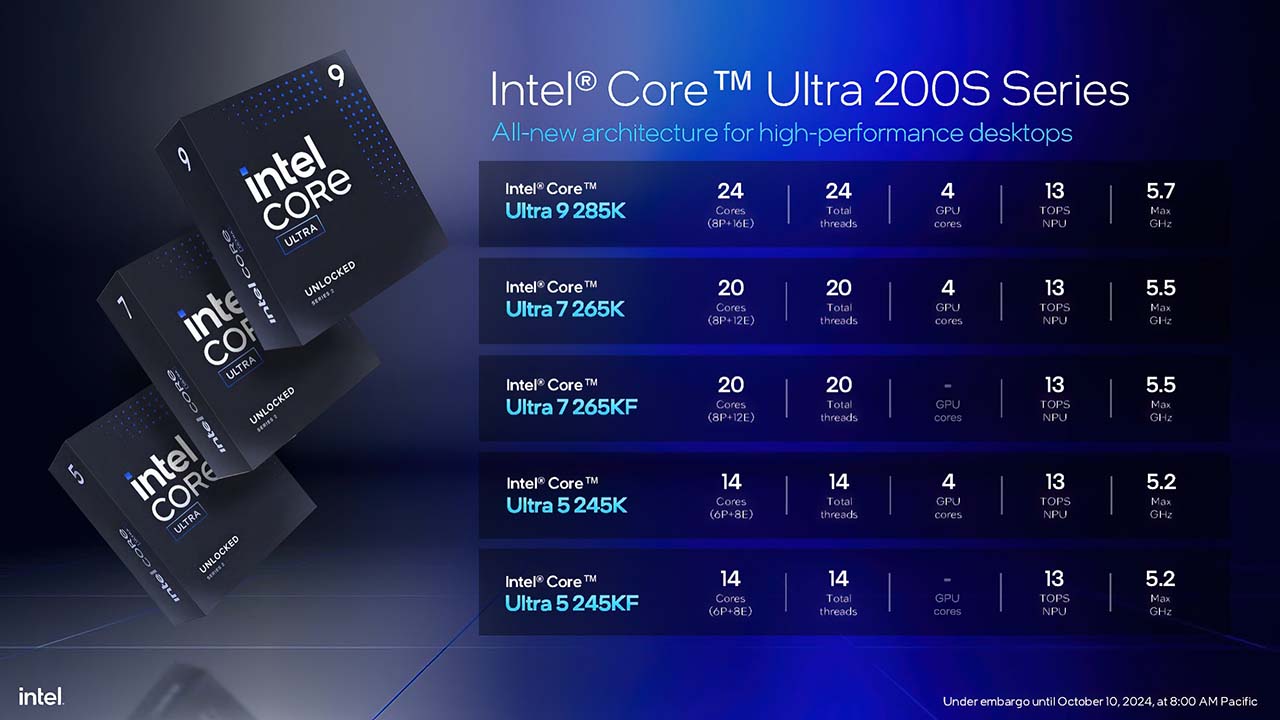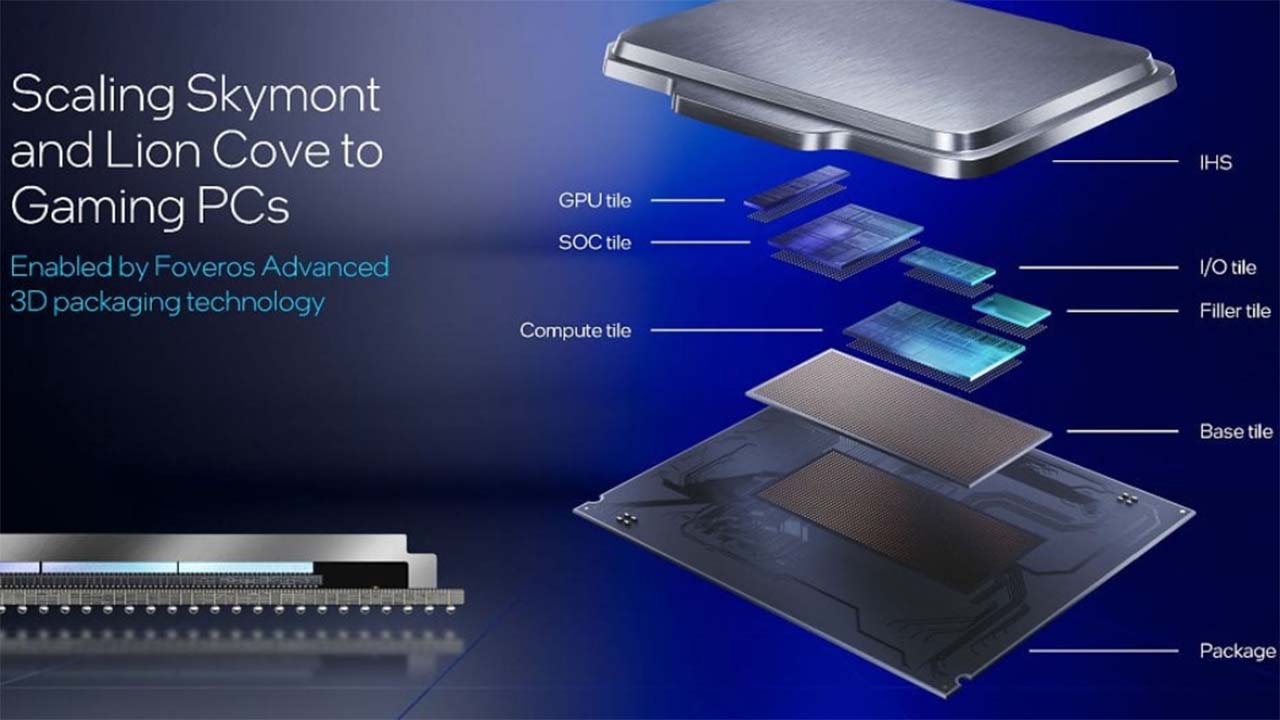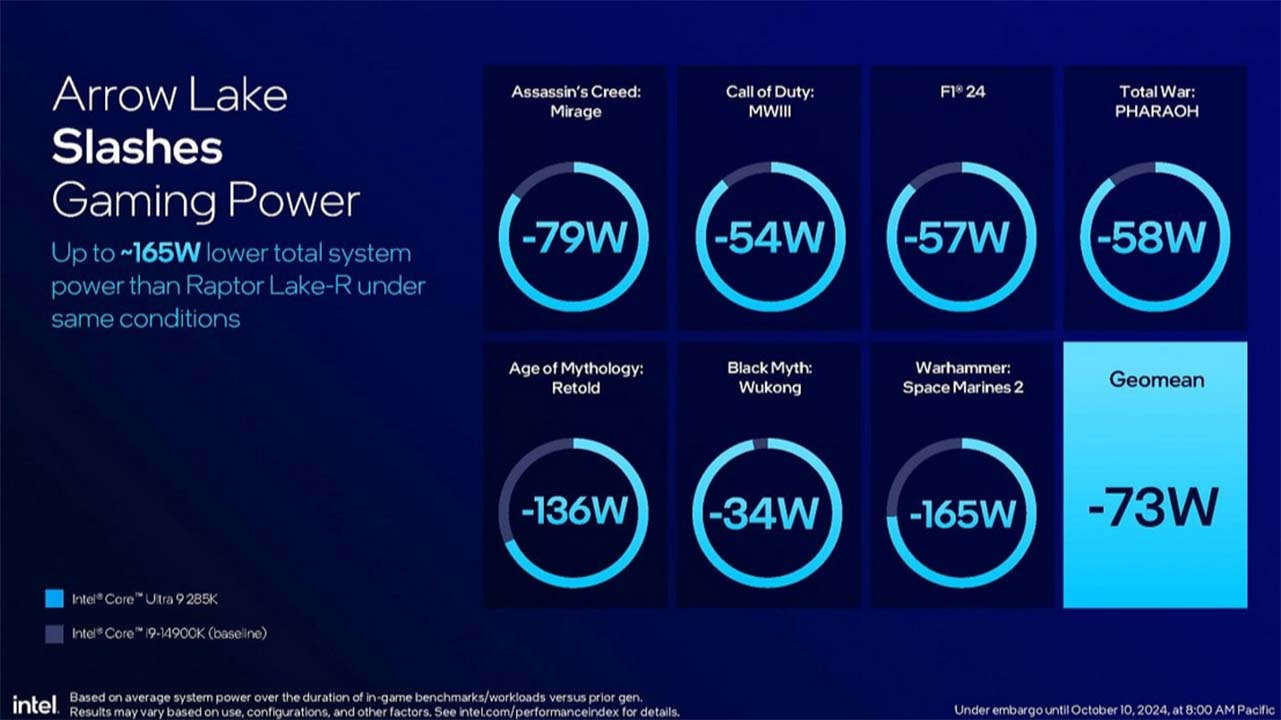Intel Arrow Lake Review: Core Ultra 9 285K, Core Ultra 7 265K, and Core Ultra 5 245K
30 Oct 2024

With the new “Arrow Lake” processor line, Intel introduces the Core Ultra 9 285K, Core Ultra 7 265K, and Core Ultra 5 245K models, promising advances in both efficiency and performance over the previous “Raptor Lake” generation. Launched on October 10, 2024, Intel highlighted enhanced efficiency per watt and new integrated graphics features, including ray tracing, a first for Intel desktop CPUs. Arrow Lake aims to redefine standards in power and performance.
Key Technical Features and Architecture
The Arrow Lake processors employ a tile-based design, made possible by Intel's Foveros 3D packaging technology. This allows Intel to arrange components like the SoC, IGP, or I/O tiles independently on a base tile, creating a modular approach similar to AMD's chiplet architecture. Intel has also opted to exclude hyper-threading from this series, increasing efficiency without compromising performance. Arrow Lake’s higher IPC (Instructions per Cycle) gains, particularly from new E-cores, deliver up to a 32% speed boost over the prior generation.

Technical Specifications of the Intel Arrow Lake Processors
| Processor | Cores/Threads | Base Clock (GHz) | Turbo Clock (GHz) | L3 Cache | TDP | Price (USD) |
|---|---|---|---|---|---|---|
| Core Ultra 9 285K | 8P+16E / 24T | 3.7 (P) / 3.2 (E) | 5.7 (P) / 4.6 (E) | 36 MB | 125W / 250W | $589 |
| Core Ultra 7 265K | 8P+12E / 20T | 3.9 (P) / 3.3 (E) | 5.5 (P) / 4.6 (E) | 30 MB | 125W / 250W | $394 |
| Core Ultra 5 245K | 6P+8E / 14T | 4.2 (P) / 3.6 (E) | 5.2 (P) / 4.6 (E) | 24 MB | 125W / 159W | $309 |
Performance and Benchmark Results
Benchmark results confirm significant progress in efficiency with Arrow Lake processors. The Core Ultra 9 285K, Intel's flagship model, achieves impressive multithreaded performance in Cinebench R23, scoring 42,208 points. This places it slightly ahead of the AMD Ryzen 9 9950X with a score of 42,013, though with slightly lower power consumption. In gaming scenarios, the Core Ultra 9 285K uses about 83 watts, significantly lower than the previous Core i9-14900K which has a comparable score but draws about 73 watts more on average.
In multithreading tasks, Intel’s Core Ultra processors show strong results, demonstrating that the new design compensates well for the absence of hyper-threading. For example, the Core Ultra 7 265K and Core Ultra 5 245K models perform competitively in their respective categories, offering efficient performance in power-intensive applications.
Power Efficiency and Frames per Watt
Arrow Lake processors boast significantly better power efficiency than the Raptor Lake series. Intel’s focus on reducing power consumption during gaming and at low loads means Arrow Lake processors use about half the power for similar performance levels, enhancing their appeal for power-sensitive applications and multitasking environments.

Limitations in Gaming Performance
Despite gains in application efficiency, Arrow Lake processors fall short in gaming performance. Benchmarks failed to consistently achieve Intel’s advertised frame rates, possibly due to increased latency and lower ring frequencies. Compared to AMD’s Ryzen processors, Arrow Lake CPUs deliver lower-than-expected frame rates, especially when comparing frame times that determine smoothness in gameplay.
Conclusion: Promising Potential with Room for Improvement
Intel’s Core Ultra processors in the Arrow Lake generation show notable improvements in power efficiency and application performance, making them an attractive choice for users prioritizing both gaming and productivity. However, Arrow Lake is still trailing AMD in gaming performance. Intel has laid a solid foundation with Arrow Lake, and future updates may address gaming performance challenges. For those focused on efficiency and multitasking, the new Arrow Lake processors could be a compelling choice.